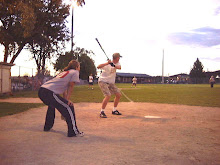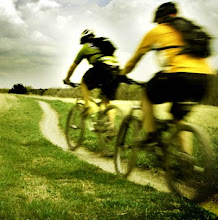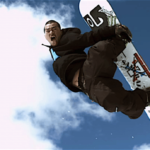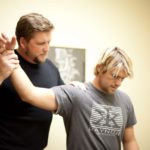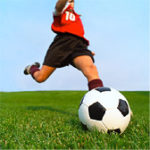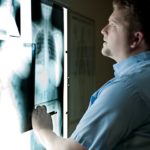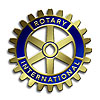Dr. Tyler Johnson is pleased to provide education and information from a variety of trusted, professional resources. Our goal is to increase the knowledge and comfort of our patients across a wide spectrum of interests affecting their health and well being.
If you have specific questions or concerns you’d like to discuss personally with us, please click here . Or contact us at our San Clemente office @ (949) 436-6440 . It would be our pleasure to ensure your complete understanding of the science of chiropractic treatments or other subjects covered in the article below.
The benefits of chiropractic care for children have become increasingly evident as the number of children receiving chiropractic care continues to rise.1 Chiropractic research has overwhelmingly shown the benefit of chiropractic care for children. However, there continue to be reports which question the safety of chiropractic care.3 In light of this trend of care for increased numbers of children, and those safety considerations, it has become important to evaluate the risk potential to the pediatric patient presenting for chiropractic care.
In response to these safety concerns, the research department of the ICPA has published a first paper concerning the safety of adjusting children. In the current issue of the Journal of Vertebral Subluxation Research, ICPA research assistant Rich Pistolese has published a report entitled, “Risk Assessment of Neurological and/or Vertebrobasilar Complications in the Pediatric Chiropractic Patient.”4 This timely paper specifically addresses the safety issues associated with chiropractic care for children.
Reports of serious complications (regardless of age) following chiropractic adjustments and/or manipulation are extremely rare.5,6,7 Nevertheless, since disturbance of vertebral artery circulation is the most commonly reported adverse event associated with the adult population under chiropractic care, the study focused on evaluating the risk of occurrence of neurovascular complications in the pediatric patient.
The study acknowledges most complications following cervical manipulation are caused by disturbances of vertebral artery circulation, and the resultant damage to neurological components supplied by the vertebrobasilar system. While it has been reported that vertebral artery dissection is an uncommon cause for stroke in children,8 current statistics reveal that the pediatric population is not exempt from this phenomenon. Reports show the annual incidence of strokes for children under 15 years of age to be 2.7 per 100,000 children.9
There is a strong correlation between the severity of spinal cord injury and the immaturity of the spine.10 It behooves the chiropractic profession to pay special attention to avoiding procedures that could induce stroke or other related complications in the pediatric patient, since the majority of complications attributed to spinal manipulative procedures are related to rotational manipulation of the cervical spine.11
The author advises that all spinal adjustments should be of very low force and short amplitude to minimize risk to the pediatric patient. Adjusting procedures should exclude any maneuver that includes rotation, extension and traction. The author also suggests a change from manipulative methods to low-force movements, which may help to minimize neurovascular complications and other types of potential harm.
In regards to risk assessment, in this report the research department of the ICPA has conducted an extensive search of Medline and Mantis and found only two questionable reports of adverse neurovascular events in pediatric patients following chiropractic care. While the author has heard claims from pediatricians and other health care professionals that chiropractic may cause epiphyseal plate fractures in children, no such cases were found reported in the scientific literature. Any health care professional who makes such claims should be quickly challenged to provide documentation of such claims.
Based on information gathered in this study, the ICPA’s research department has concluded the following:
- In the prevalent scientific/clinical literature spanning the last 32+ years, there are only two reported cases of neurovascular complications related to pediatric patients receiving chiropractic care.
- Based on an eclectic summation of data derived from three sources, a conservative estimate of the number of pediatric visits to chiropractors in the U.S. over the same time span amount to over 1/2 billion visits.
- The risk of a neurovascular complication occurring as the result of chiropractic care is approximately one out of every 250 million visits.
When considering the use of any health care procedure, the expected benefit must be weighed against the inherent risks. Based on this axiom, chiropractic care relative to neurovascular complications appears to present little risk to the pediatric patient when compared to cited reports related to benefits of chiropractic care. While some pre-existing conditions may predispose the pediatric patient to a higher probability of complication, the estimate provided is considered applicable to the general pediatric population.
By Claudia Anrig, DC
To obtain your copy of this report, contact the Journal of Vertebral Subluxation Research, 2950 N. Dobson Road, Suite 1, Chandler, AZ 85524, tel: 1-800-347-1011. You can also contact the ICPA at 5295 Highway 78, Suite D362, Stone Mountain, GA 30087, tel: 770-982-9037.
References
- Goertz C. Summary of 1995 ACA annual statistical survey. JACA 1996;33(6):35-41.
- Vange B. Contact between preschool children with chronic diseases and the authorized health services and forms of alternative therapy. Ugeskr Laeger 1989;151(28):1815-8.
- Ernst E, Assendelft WJJ. Chiropractic for low back pain. BMJ 198;317(7152):160.
- Pistolese RA. Risk assessment of neurological and/or vertebrobasilar complications in the pediatric chiropractic patient. J Vertebral Sublux Res 1998;2(2):73-81.
- Crawford JP, Byoung YH, Asselbergs PJ, Hickson GS. Vascular ischemia of the cervical spine: a review of the relationship to therapeutic manipulation. J Manipulative Physiol Ther 1984;7(3):149-55.
- Dvorak J, Baumgartner L, Burn JB, et al. Consensus and recommendations as to the side effects and complications of manual therapy of the cervical spine. J Manual Medicine 1991;6:117-8.
- Fossgren J. Complications in manual medicine. J Manual Medicine 1991;6:83-4.
- Khuruna DS, Bonnemann CG, Dooling EC, et al. Vertebral artery dissection: issues in diagnosis and management. Pediatr Neurol 1996;14(3):255-8.
- Alvarez-Sabin J. Stroke in teenagers. Rev Neurol 1997;25(142):919-23.
- Ruge JR, Sinson GP, McLone DG, et al. Pediatric spinal injury: the very young. J Neurosurg 1998;68:25-30.
- Greenman PE. Principles of manipulation of the cervical spine. J Manual Medicine 1991;6:106-13.
Claudia Anrig, DC
Clovis, California


